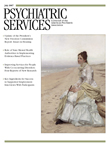The Biopsychosocial Formulation Manual: A Guide for Mental Health Professionals
In 1977 George Engel ( 1 ) said, "To provide a basis for understanding the determinants of disease and arriving at rational treatments and patterns of health care, a medical model must take into account the patient, the social context in which he lives, and the complementary system devised by society to deal with the disruptive effects of the illness."
This manual was developed by two psychiatry residency program directors, William Campbell and Robert Rohrbaugh, and is based on their experience teaching a structured model for biopsychosocial formulation to residents. They observe that many trainees, despite efforts to gather a thorough history, struggle to organize a patient's history into a complete and meaningful biopsychosocial formulation. They claim that the "predominant mode of instruction in many contemporary training programs (psychiatry, psychology, social work) does a disservice to the biopsychosocial model." To promote full consideration of the biological, psychological, and social realms, the authors propose a "structured paradigm" in the collection and analysis of clinical information. Following Campbell and Rohrbaugh's approach creates a biologic formulation, a psychological formulation, and a social formulation. It is less apparent that it creates a biopsychosocial formulation.
A brief chapter about biologic contributions reminds the reader to consider how demographic characteristics, medical illness, genetic predispositions, and use of substances fit with a patient's presentation. Here the authors are a little too cute with mnemonic acronyms. The authors find that early training often underemphasizes psychological formulation, so this area is discussed at considerably greater length. The psychological formulation in this manual is organized around four components: the patient's psychological theme, the current psychosocial precipitant, the impact of this stressor on the patient's emotions and cognitions, and the patient's adaptive and maladaptive coping mechanisms. To assist the reader in considering a variety of psychotherapeutic perspectives, brief explanations of relevant concepts from psychodynamic, cognitive, and behavioral therapy—such as common defense mechanisms and cognitive distortions—are included. The chapter about social formulation starts from a social database of ten categories and grafts on cultural and spiritual assessments.
Differential diagnosis should be made by using the three areas—bio, psycho, and social—and sorting presenting symptoms into eight major categories. One then matches these with DSM-IV diagnoses. Risk assessment is then done with another database and more mnemonics. When considering risk assessment, the authors suggest separate consideration of static risk factors, dynamic risk factors, protective factors, and a review of the steps that might culminate in violence. A risk reduction plan is developed with interventions planned for each of the dynamic risk factors.
Final chapters delineate a similarly structured approach to creating a treatment plan, which is divided into biologic, psychological, and social areas in need of assessment and intervention. Examples of assessment strategies for each area—such as laboratory and imaging studies, psychological testing, and functional evaluations—are provided. Potential treatment approaches are listed in easy-to-use tables. But again, everything is compartmentalized. Finally, the authors instruct the reader on how to write a prognosis.
Templates for recording and organizing interview data, as well as tables summarizing relevant concepts, are included throughout the manual and on the accompanying CD. A case example is provided to illustrate the approach.
Could any resident or attending at any hospital follow this manual, documenting so much material after the mental status exam and before and after the differential diagnosis as the authors illustrate, and ever be able to go home at the end of a work day? We tend to think not.
The best uses for this text are for first-year residents just getting started in doing work-ups and to study for the American Board of Psychiatry and Neurology oral exam. Get your library to purchase a copy.
1. Engel GL: The need for a new medical model: a challenge for biomedicine. Science 196:129–136, 1977Google Scholar



